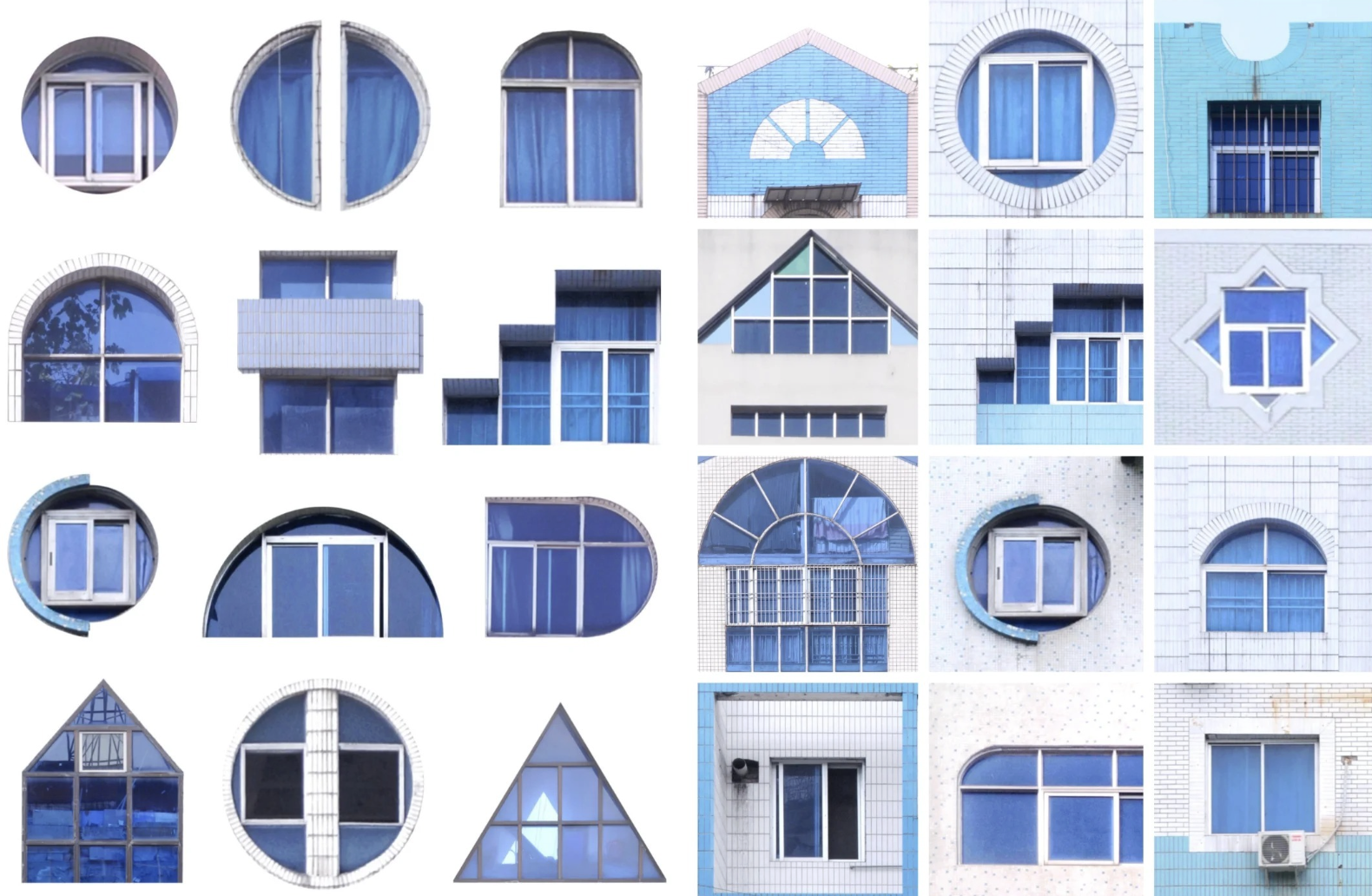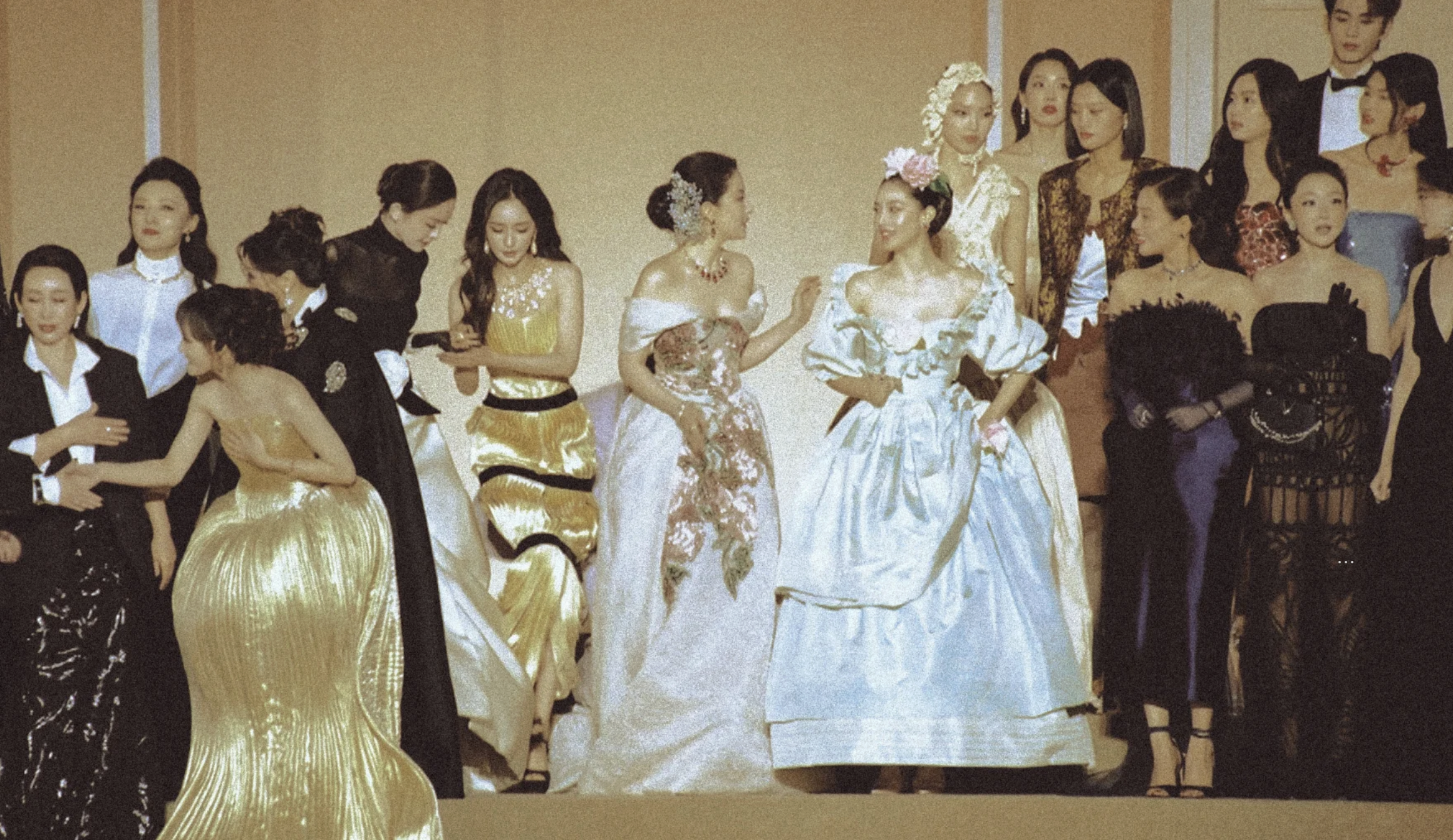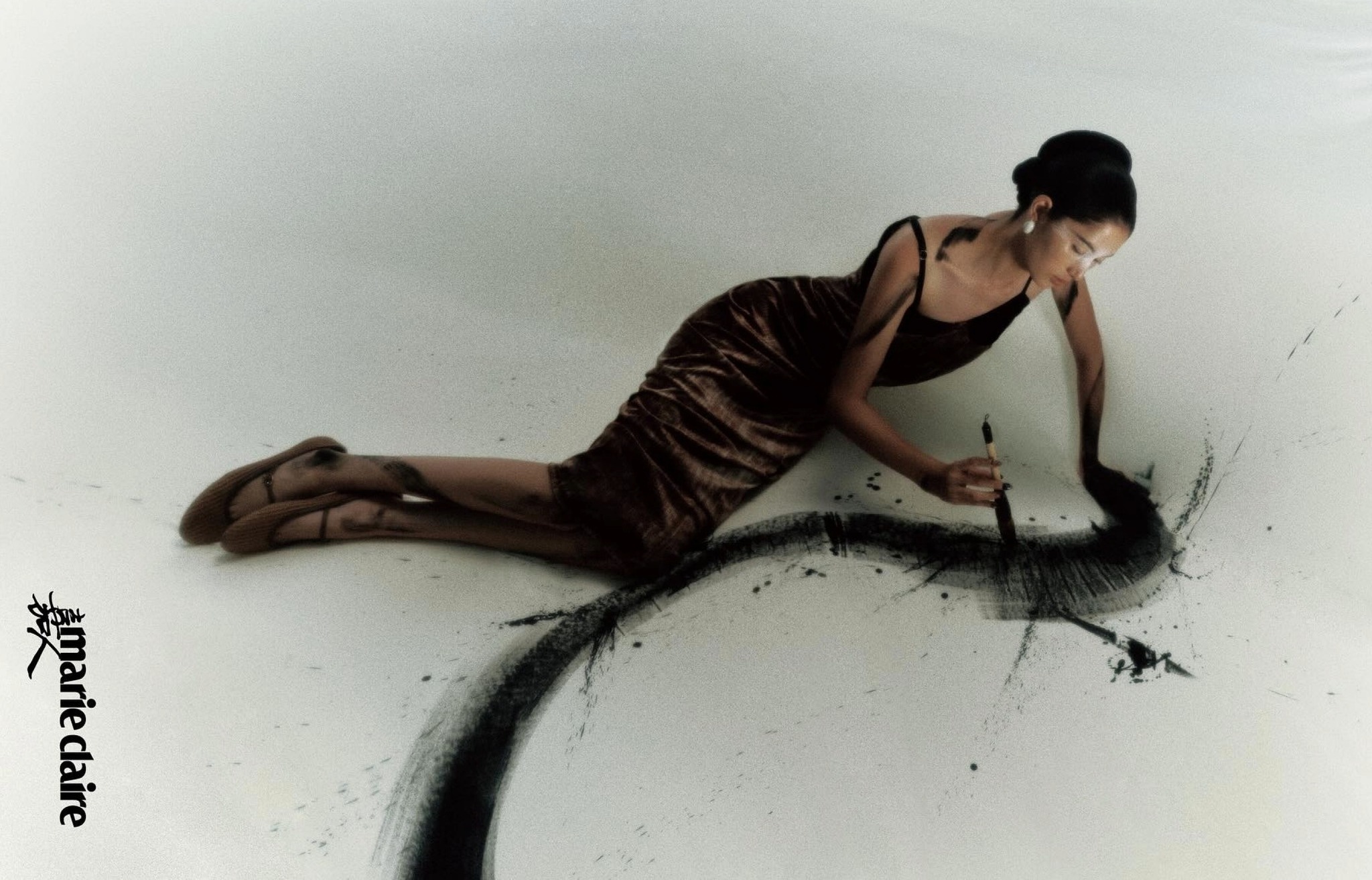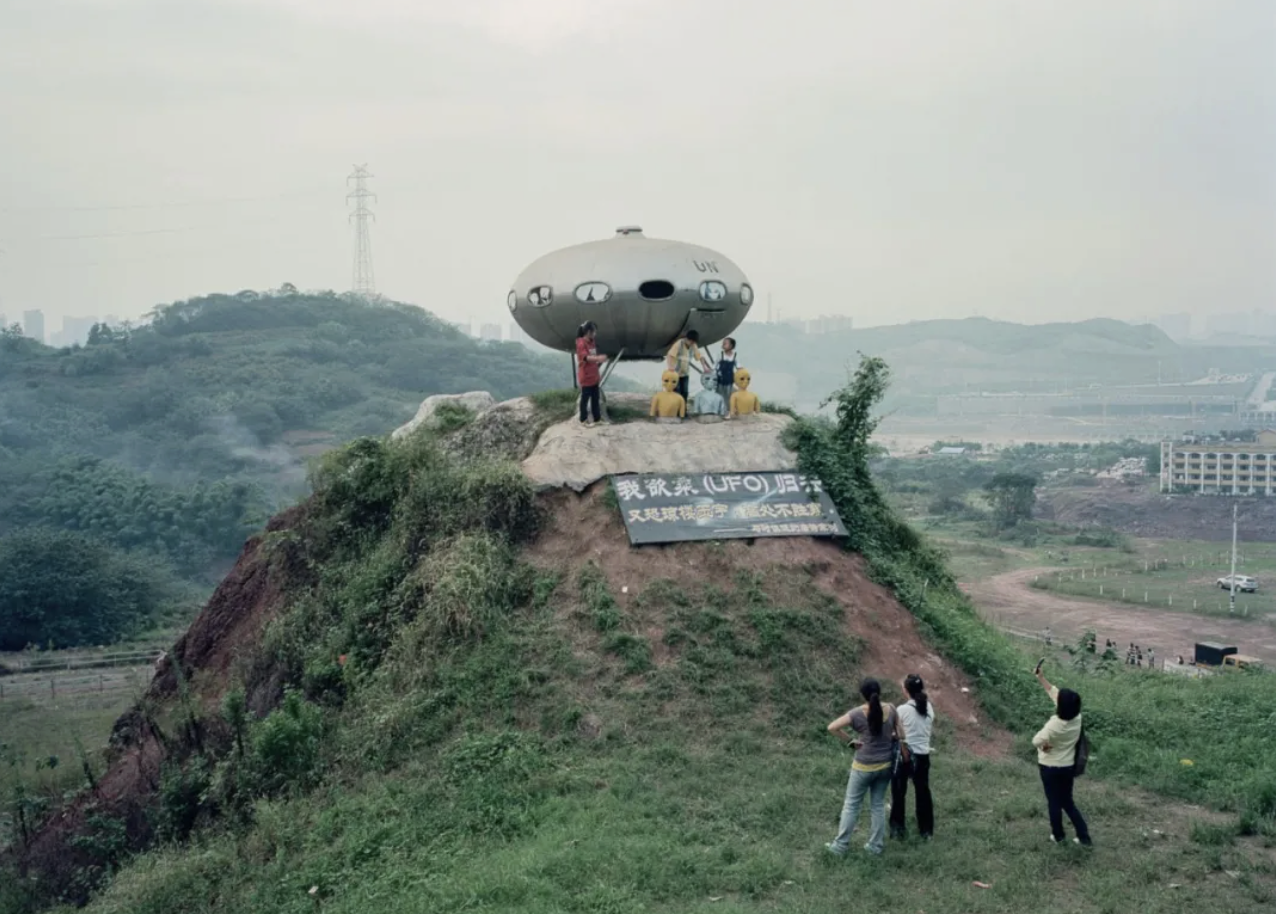Since Liu Min launched her Princess Butterfly persona in early 2018, she’s become perhaps the most prominent name associated with one of China’s leading fashion movements. Playfully named 土酷 (sounding like “Too Cool” in English), the trend is defined by bedazzled, ostentatious looks that were not long ago lambasted, but are now points of pride.
Princess Butterfly’s unadulterated acceptance of the things that she encounters in her immediate environment, as well as her vibrant online and offline personalities and visual style, have seen her established as one of the faces of Too Cool and as a muse for prominent Chinese photographers such as Luo Yang and Hu Weishan.
Hu even described her discovery of Princess Butterfly as “a crucial turning point” for her career. “She inspired me in so many different aspects,” Hu told us last year, “which also led to my later exploration of kitsch and the cultivation of taste and aestheticism in modern China.”
It’s not hard to see the appeal. A quick flick through Princess Butterfly’s Weibo or Instagram accounts takes you on a journey of qipaos adorned with images of Chinese gods, stockings decked out with gold ingots, and idyllic natural backgrounds that feature flowers, clouds, the Great Wall and waterfalls — all with highly saturated colors.
Related:
 Photographer Hu Weishan’s Vibrant Work Celebrates Unconventional ChinaPhotographer Hu Weishan spotlights fashion and trends that have been neglected or deemed ugly by mainstream society in ChinaArticle Dec 15, 2020
Photographer Hu Weishan’s Vibrant Work Celebrates Unconventional ChinaPhotographer Hu Weishan spotlights fashion and trends that have been neglected or deemed ugly by mainstream society in ChinaArticle Dec 15, 2020
If the Too Cool movement sounds like an obscure subculture trend, in mid-2020 it came hurtling into the mainstream when Balenciaga got in on the act, using facets of the movement’s imagery for an advertisement for Qixi (a traditional festival frequently referred to as “Chinese Valentine’s Day”).
The ad stirred controversy, with Princess Butterfly herself becoming embroiled, as netizens suspected that the brand had co-opted her own particular style and use of kind-of-corny “idyllic” backgrounds in their imagery. One of the overwhelming responses to the advertisement was apparent disgust, as netizens wondered why Balenciaga had decided to use “vulgar and old-fashioned imagery.”

While Princess Butterfly does find inspiration for her designs and images in the “土 earthy” styles that she sees around her, she refutes the idea that these choices are old-fashioned. “I’ve said it too many times,” she says of Too Cool. “I don’t think it’s the style of the past.”
Instead, she looks at it as vintage, nostalgic — a retro throwback to a particularly vibrant era in China’s history when the country was in the process of opening up.
Related:
 China Designers: How This Label Channels Big Chinese Auntie EnergyBeijing-based fashion label MARRKNULL makes social commentary about China’s rapid developmentArticle Aug 04, 2020
China Designers: How This Label Channels Big Chinese Auntie EnergyBeijing-based fashion label MARRKNULL makes social commentary about China’s rapid developmentArticle Aug 04, 2020
The designs that one can find on Princess Butterfly’s social profiles are a window into her world, seemingly a throwback to this bygone era when China was moving online, with frequent references to kitsch styles and DIY aesthetics.
Born as Liu Min in Huilongguan in the north of Beijing, Princess Butterfly has crafted a style based around her appreciation for the things that she sees in her day-to-day life. She cultivated this aesthetic, as well as her online persona, as a student in arts school in Taipei. Using the internet to her advantage, Princess Butterfly has built followings on social media sites such as Weibo, Instagram and Douyin (the Chinese version of TikTok) with her vibrant, colorful and sexy images.


“The amazing things in my daily life have a great impact on me,” she says. “I will record what I see on the road and on the internet every day and reflect what I see on my images and clothes. People on the street, signboards, slogans, goods on Taobao, short videos, these are all my inspiration.”
As such, it’s hard to define Princess Butterfly as any one specific thing. She combines so many different avenues of creativity. In a sense she is a persona, and her own image is the canvas. On the one hand she is a model, a photographic subject. On the other, she is a curator and photographer herself, capturing facets of daily life that focus around China’s opening up, questions of sexuality and sexiness in the country, femininity and what it means to be a woman, as well as styles that incorporate traditional Chinese imagery. She’s also a fashion designer.


Liu’s drive to create and curate images began when she was young. “I grew up very fond of painting, painting a variety of things. Things that reflected the nature of beauty, so I also drew a lot of clothing sketches, fantasizing about becoming a fashion designer,” she tells us. “After getting a smartphone, I fell in love with taking pictures.”
In 2018 she launched her own zine called 缘来是你 (which loosely translates as Fate is You) which she describes in an Instagram post as a method to make friends. Also referenced as a dating magazine, Fate was split into sections, with calls for a making friends column, emotional stories, confessions and “mystery,” featuring zodiac signs.
Increasingly, she is spending more of her time making clothes and accessories. “I have the time and ability to make clothes, so I have realized what I have always wanted,” she says. “I like photography, but I prefer a kind of recording rather than creative photography, which is more of a way of observation for me. And even when I don’t have a camera, I take pictures with my eyes. I don’t know fashion very well. Fashion feels more than just creating clothes to dress up for myself — I’m just using my look to express myself at this stage.”


This creativity speaks to her individuality. While Princess Butterfly has become inextricably linked to the “Too Cool” movement, she defines herself on her own terms, completely.
In an interview with 公路上点, she talked about how important it is to be unique: “The reason for my existence is to be ‘different,’ and to do things ‘unprecedented’ — this is the most important thing for me, otherwise I have no reason to exist.”
For her, clothes and aesthetic play an important, if conflicted, role in her identity. “Wearing the clothes you want to wear is sometimes important, but most of the time it’s not,” she tells us. “In the context of survival, wearing clothes to express themselves is actually ridiculous and frivolous.
“It’s important to create what you want to do and say what you want to say.”

















